Archaeological dig finds that ancient groups incinerated and buried their departed in pots
Source - http://artdaily.com/index.asp?int_sec=2&int_new=60395[/url]
Photos : Samira Macías / INAH
CEMENTERIO REVELA TRADICIÓN FUNERARIA DE SONORA
Source - http://www.inah.gob.mx/index.php/boletines/16-antropologia/6348-cementerio-prehispanico-revela-tradicion-funeraria-de-sonora
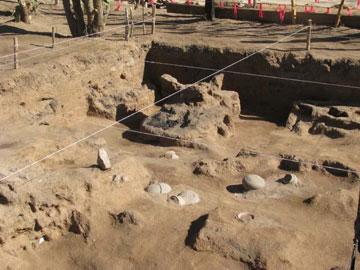
Researchers from the National Institute of Anthropology and History (INAH-Conaculta) keep acquiring knowledge of funerary practices in the ancient groups that inhabited the north of Sonora, such as the incineration and burial (in pots) of their departed, a custom that has been known to archaeologists since the finding of a pre Hispanic cemetery of approximately 700 years old in the Archaeological Zone of Cerro de Trincheras. Archaeologist Elisa Villalpando Canchola, who directs the investigation in this pre Hispanic site, said the location of this funerary context is so enriching (found in the north hillside of Cerro de Trincheras) it has been named “Loma de las cremaciones” [Hill lock of cremations] Because the site shows a lot of potential (archaeologically), they took the decision to leave “Loma de las cremaciones” as an archaeological reserve. As such, Villalpando Canchola added that the discovery of the pre Hispanic cemetery can be known until today because they wanted to study the archaeological context.
The cemetery, added the INAH-Sonora’s Center investigator, was only intervened in a 10 by 10 meter (32.8 feet by 32.8 feet) area, and by means of making strategic wells, they corroborated that this funerary pattern can be repeated along the small hill, so in this case they took advantage of the less deep parts of the hill. In this restrained section –of 10 by 10 meter (32.8 feet by 32.8 feet)- they located 145 pots that contained human remains (belonging to about 150 individuals) and incinerated animals, as well as two stone pit cremations and one more deposited directly over the ground. Also, they excavated three child burials.
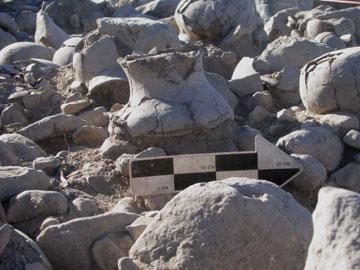
The pots emphasized by their variety of shapes and forms; some represent pumpkins, others are oval shaped with two perforations, or with a tall neck and a larger mouth (like flower pots).
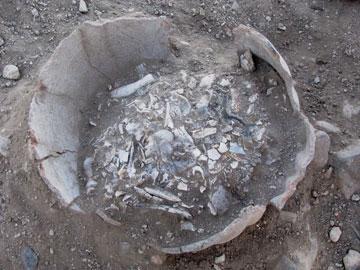
They also found earthenware bowls, one of these was decorated. All the ceramic collection belongs to what is known as the “Tradicion Trincheras”, from the lower desert zone of Sonora. From the pots, they recovered the cremated remains of almost 150 individuals (some pots contained two individuals’ remains), some of which were incinerated with rock beads, crystal quartz, frog shaped earrings, bracelets and shell rings.
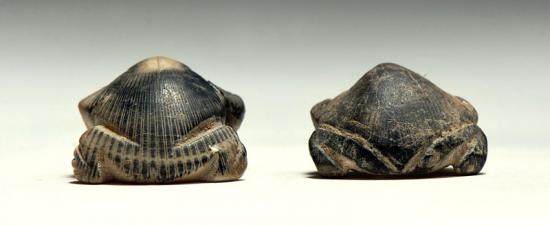
Pendientes en forma de rana, asociados con vasija funeraria.
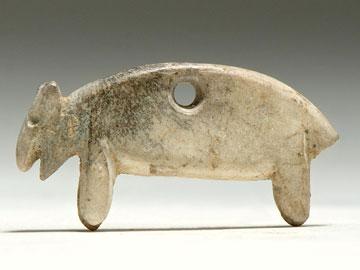
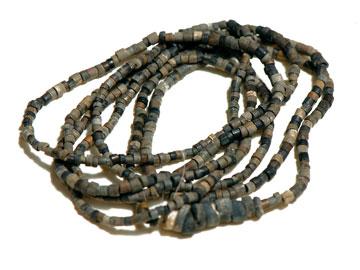
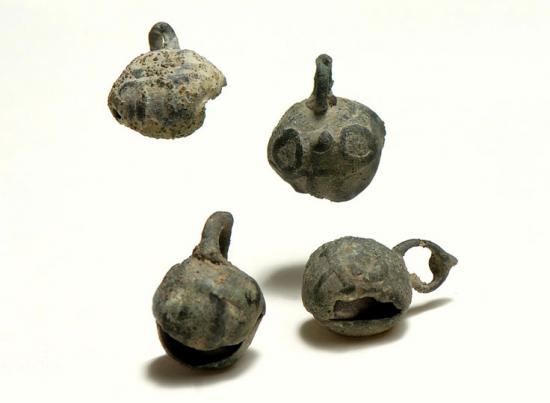
Cascabeles de cobre con la representación del dios Tláloc o Masau.
This is concluded as most of the materials were burnt and fragmented. According to Villalpando Canchola, the process of incineration was at high temperatures (for hours or maybe days), until the pyre cooled off. The remains were cleaned, manipulated and then deposited in the ceramic objects which explain the absence of charcoal and the pyre residue inside the pots on “Loma de las cremaciones”. In the pyre digging, they recovered “carbonized tree trunks, charcoal and ash concentrations: stone beads, pots, rings and shell bracelets, bones of carbonized animals and small charred human bones. The investigators James T Watson and Jessica Cerezo Roman, from the Anthropology school of the University of Arizona, lead the remains’ analysis; also in this same institution they are making tests to determine their precise date. All these findings and interpretations will be a part of a museographic script of what will be the permanent exposition of the Visiting Center of Cerro de Trincheras, the first archaeological zone open to the public in Sonora, which in 2012 received almost three thousand visitors, most of the originating from the north of Mexico and southern United States.